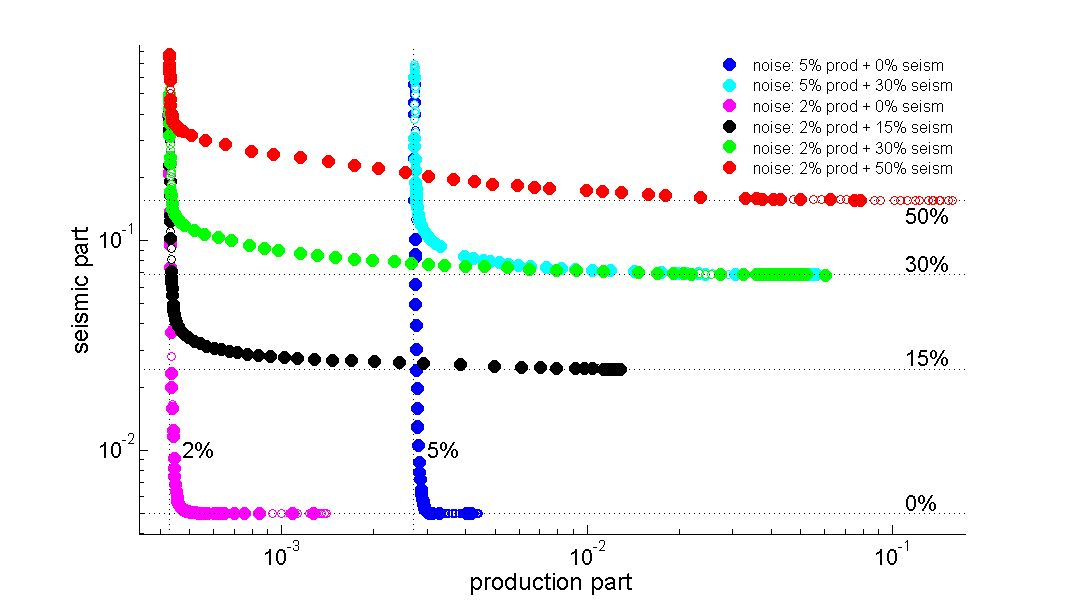Gradient-based Pareto Optimal History Matching for Noisy Data of Multiple Types
The advantages of the simultaneous integration of production and time-lapse seismic data for history matching (HM) have been demonstrated in multiple studies. Production data provide accurate observations at specific spatial locations (wells), while seismic data enable global, though filtered/noisy, estimates of state variables.
In this work we present a fast and efficient computational tool for history matching, in which data misfits of both the production and seismic measurements are minimized using an adjoint-gradient approach. This enables us to obtain a set of optimal solutions embodying the trade-off between the production and seismic data misfits (which are, to some extent, conflicting). We discuss the existence of the (best) trade-off solution that surpasses other solutions in its ability to forecast future reservoir production. We also demonstrate quantitatively that, in the best trade-off solution, the negative effects of noise in the seismic data are effectively counteracted by information from the production measurements.
The analysis of Pareto optimal solutions is performed for history matching integrating production and time-lapse seismic data. The Pareto front constructed in two-dimensional data misfit space allows to identify the least conflicting reservoir model. This procedure is repeated for the data with noise of different levels. Factors influencing the structure of the Pareto fronts are thoroughly investigated with regards to the prior information completeness, noise level and structure.
Project Collaborators
- Oleg Volkov (Stanford University)
- Louis J. Durlofsky (Stanford University)
- Khalid Aziz (Stanford University)
References
- O. Volkov, V. Bukshtynov, L.J. Durlofsky, and K. Aziz, "Gradient-based Pareto Optimal History Matching for Noisy Data of Multiple Types", Computational Geosciences 22(6), 1465-1485, 2018 (the final version of the paper is available at doi: 10.1007/s10596-018-9766-0).
- Poster presented at SIAM Annual Meeting AN18, Portland OR, US (July 10, 2018) [PDF file, 1.31Mb]


